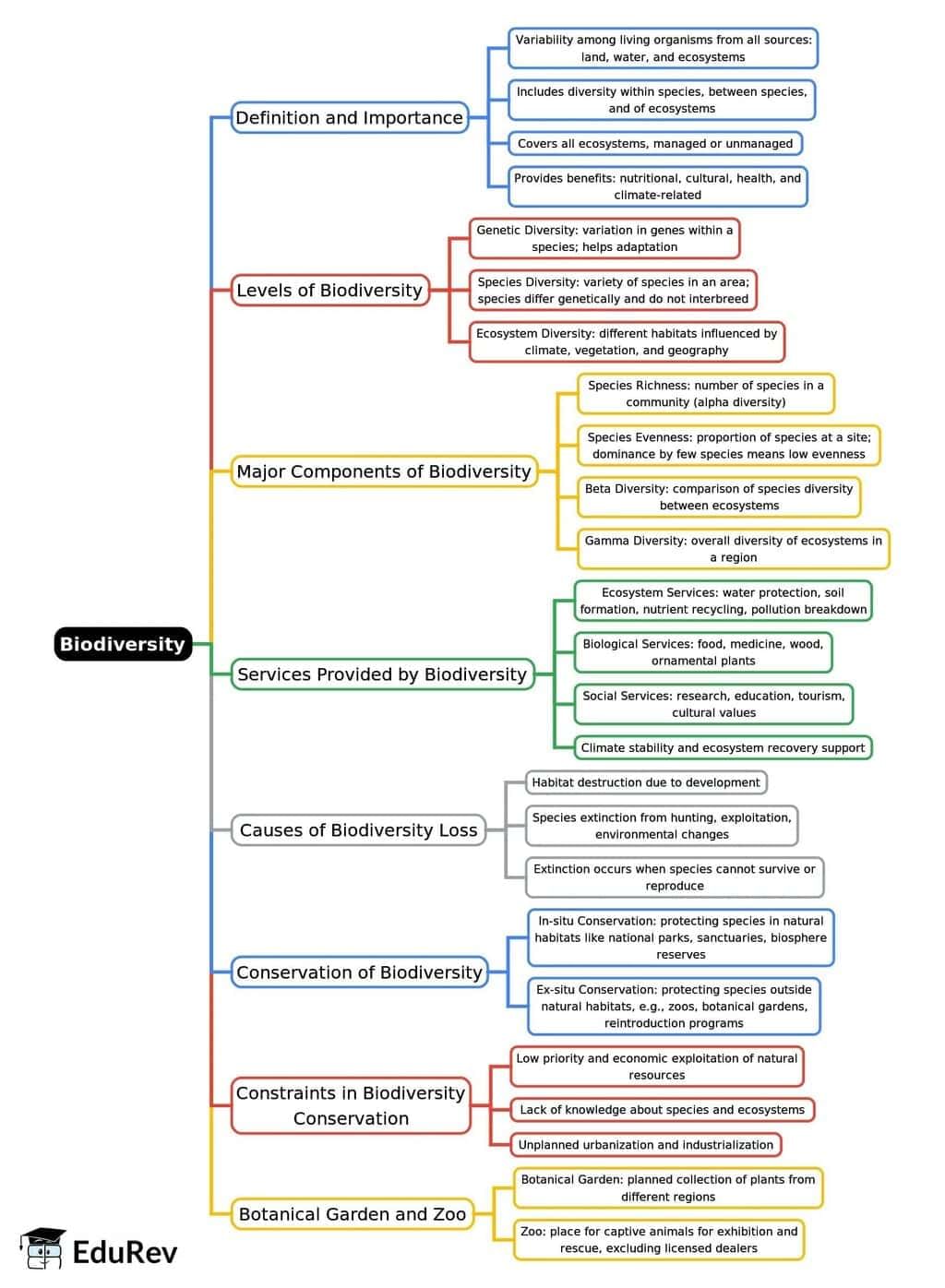UPSC Exam > UPSC Notes > Environment for UPSC CSE > Mind Map: Biodiversity
Mind Map: Biodiversity | Environment for UPSC CSE PDF Download
Biodiversity - 1

Biodiversity - 2

The document Mind Map: Biodiversity | Environment for UPSC CSE is a part of the UPSC Course Environment for UPSC CSE.
All you need of UPSC at this link: UPSC
|
95 videos|230 docs|52 tests
|
FAQs on Mind Map: Biodiversity - Environment for UPSC CSE
| 1. What is biodiversity and why is it important for ecosystems? |  |
Ans.Biodiversity refers to the variety of life forms in a particular habitat or ecosystem, including the diversity of species, genetic variations, and the ecosystems themselves. It is crucial for ecosystems as it enhances resilience, ensures the stability of food webs, supports ecosystem services like pollination and water purification, and contributes to human well-being by providing resources such as food, medicine, and raw materials.
| 2. What are the main threats to biodiversity? |  |
Ans.The main threats to biodiversity include habitat destruction due to urbanization and agriculture, climate change, pollution, overexploitation of resources, and the introduction of invasive species. These factors can lead to species extinction, loss of habitats, and a decline in ecosystem health, ultimately affecting the balance of nature.
| 3. How does biodiversity contribute to human health and economy? |  |
Ans.Biodiversity contributes to human health by providing essential resources like medicinal plants, which are vital for drug development and healthcare. Economically, biodiversity supports industries such as agriculture, tourism, and fisheries, offering jobs and livelihoods. Additionally, diverse ecosystems can enhance food security and resilience against diseases and pests.
| 4. What measures can be taken to conserve biodiversity? |  |
Ans.Conservation measures include establishing protected areas like national parks and wildlife reserves, promoting sustainable land use practices, restoring degraded ecosystems, enacting legislation to protect endangered species, and raising public awareness about the importance of biodiversity. International cooperation and funding for conservation projects are also essential for effective biodiversity preservation.
| 5. What role do international agreements play in biodiversity conservation? |  |
Ans.International agreements play a significant role in biodiversity conservation by providing a framework for countries to collaborate on protecting global biodiversity. Key agreements include the Convention on Biological Diversity (CBD), which aims to ensure the sustainable use of biodiversity and the fair sharing of benefits from genetic resources, and the Ramsar Convention on Wetlands, which focuses on the conservation and sustainable use of wetlands. These agreements often facilitate funding, research, and policy development to enhance conservation efforts worldwide.
Related Searches
















